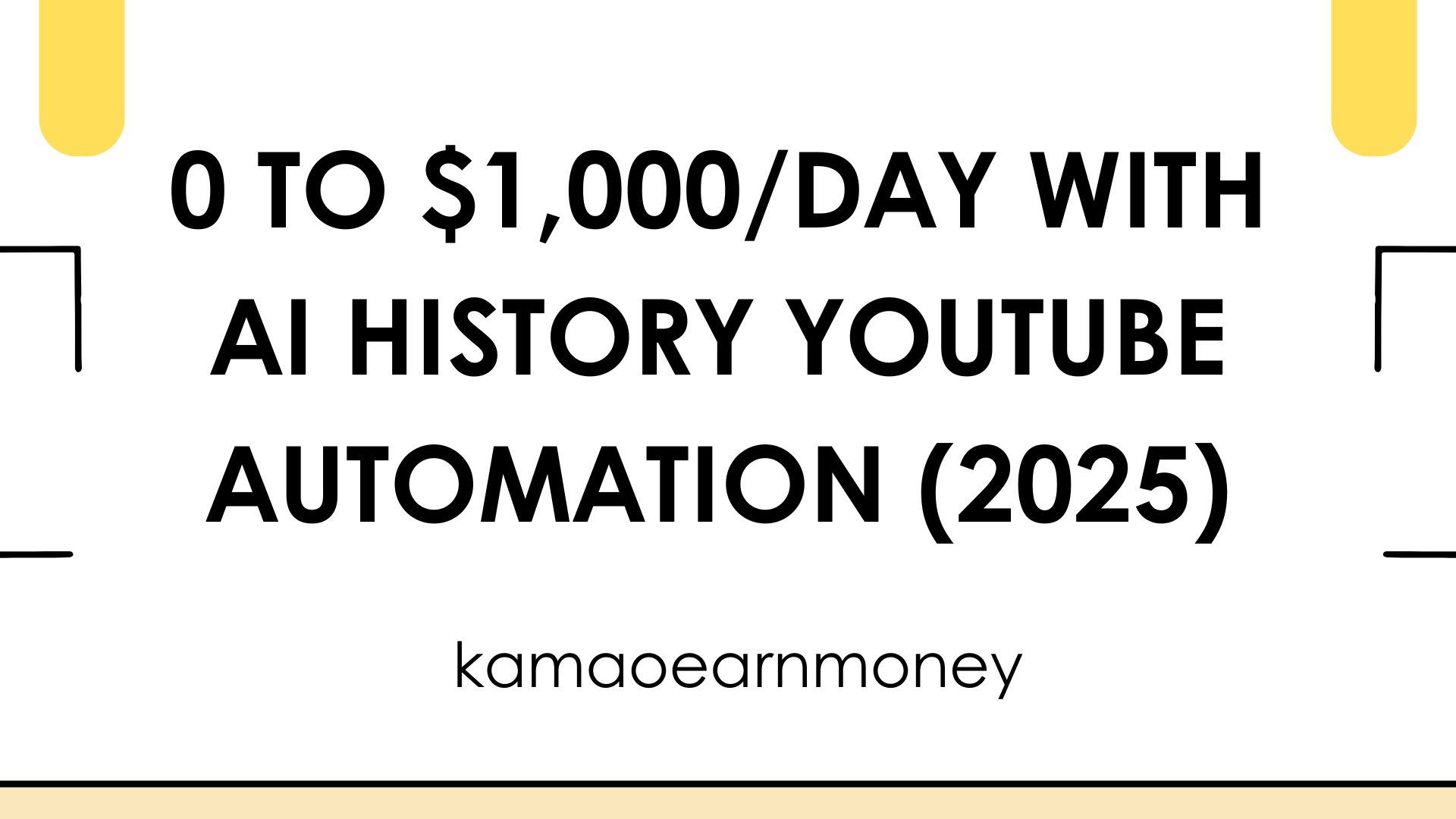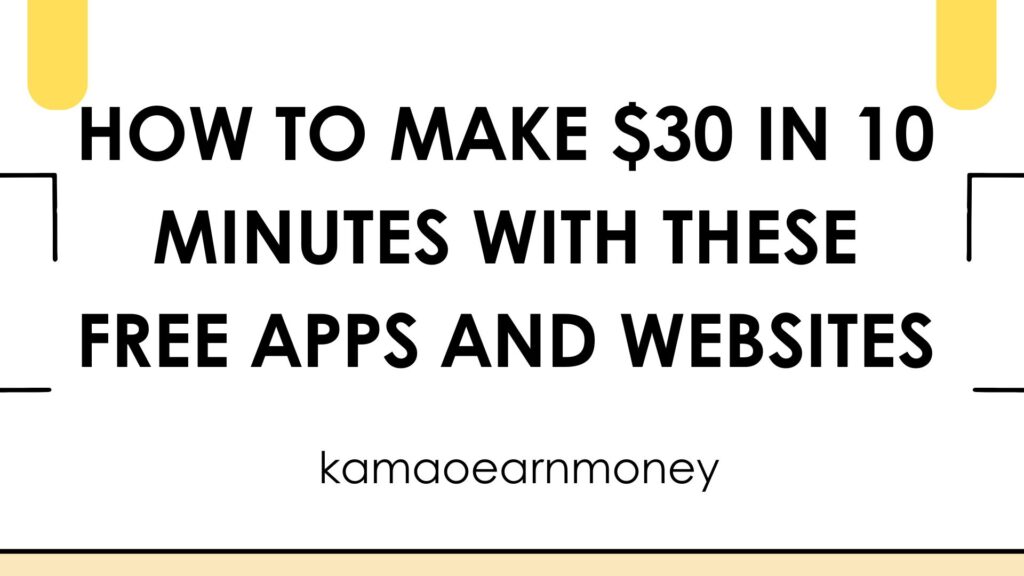How to Start a Faceless YouTube Automation Channel Using AI in the History Niche
Let me show you something. Just yesterday, I made over $1.1K on one faceless YouTube automation channel, and this faceless channel that talks about history is doing anywhere from $3,000 to $48,000 per month. While this one is doing up to $118,000, and this one up to $35,000 per month. So, in this first step-by-step tutorial, I want to show you how to start your very own faceless YouTube automation channel using AI in the history niche.
Now, I’ve been running many different faceless YouTube automation channels for the last 9 and a half years. For example, this one is doing $20,000 a month, and the lifetime of this one is $700,000. This one did over a million in ad revenue so far, and this one did over $300,000 in ad revenue. So far, the last 28 days is only about $3,000. But recently, I came across many AI history channels that are making over $1,000 per day. For example, Kings and Generals is one of them. According to Social Blade, we can see that they’re doing up to $48,000 per month. Weird History is one of them as well. They have 4 million subscribers already and are making six figures a year. Epic History is something that I like to watch when I eat my food, which helps them make over $1,000 a day.
Step 1: Get Monetized on YouTube
First of all, in order to make money from the views you’re getting on your videos, your channel needs to be approved into the so-called YouTube Partner Program. The YouTube Partner Program requirements right now are to have 1,000 subscribers and 4,000 hours of watch time, which for some people can take 6 to 12 months, and even then, they may never get accepted into the program. So, to bypass all of that, you can get instantly monetized at dfydave.com/monetization and that way, just start making money from day one and not have to wait for all of those months.
Step 2: Choose a Niche
Now, step number one to starting your very own AI history faceless channel is to choose the niche. To make things easier for you, I left this step-by-step blueprint document that is completely free inside of our free community called Online Business Friends. I’ll be linking it in the description. When you go to the Tools category, you can just open up this post, and you’re going to find the YouTube Automation Starter Blueprint for completely free. Then, just click on File, click on Make a Copy, and make a copy to your own Google Drive folder so that you can make changes to it.
Once you have it opened up, of course, as I previously mentioned, step number one is to choose the niche. But we already chose that, and that’s going to be the AI history niche. So, I’m going to take this box, and we’ll proceed to step number two, which is to choose a channel name.
Step 3: Choose a Channel Name
To find a channel name for our AI history channel, we’re going to open up ChatGPT.com, then we’re simply going to copy this prompt and paste it here. My YouTube channel is going to be about history stories, and based on that, ChatGPT will give me different channel name ideas. I really like Timelight, so I’m going to go with that.
Step 4: Create Your YouTube Channel
Now, let’s create our YouTube channel. Next up, we’re going to create our channel branding. For this, I personally either go to Canva.com or Photopia. At Canva, we can find a bunch of different logo templates. If I want to replicate a logo like this, all I’ve got to do is go back to Canva, search for “paper”, change the background color to match the paper color, and remove the transparency a little bit. Add the actual text, and to create the same effect, I’m just going to go to Effects, add this background, remove the roundness, reduce the spread, and there we go—it’s almost there. Now, it’s very, very similar to the logo that they also have.
Once done, click Share, click Download as a PNG file, and then go to Google. Search for historic art, go to images, download a few of these beauties, go back to Canva, click Resize, and select 1920 by 1080p. Go back to Google, find a few more images. If you don’t want to download these images, all you’ve got to do is just right-click, click on Copy Image, then go back to Canva and paste it like this. Once you’re done, click Share, click Download as a PNG file, go back to your YouTube channel, and click Customize. Upload the profile picture first and, of course, the actual banner that we just made in Canva as well.
Step 5: Create Your YouTube Channel Bio
If you look at my channel right now, it just starts to make more and more sense. According to the blueprint document, step number six is to now create our YouTube channel bio. We’re going to go here, copy this bio, and then go back to ChatGPT. Enter the name of your YouTube channel and what the channel is going to be about. In my case, it’s going to be about history stories. Copy that, go back to my YouTube channel, click on Customize, and once there, I will paste that into the description box and click Publish.
Step 6: Find Your First YouTube Video Idea
Once we have that out of the way, the very next step is going to be to find our first YouTube video idea. For this, I would just go to channels that I’m trying to replicate. For example, this one over here is talking about history, or for example, this one as well. Then, I want to look into the latest 30 videos and see which topics are getting more views than others. I can also go to this channel over here, and we can see that most of the videos here that either talk about Nelson or Napoleon seem to get more views. We can see that all other videos get about 100,000 views, but this one got 300,000 views and it was posted two weeks ago.
Step 7: Write Your Script
Now, I’m going to write my very first script on that topic. We’re going to open up this ChatGPT prompt, which has everything we need for a viral script, and it’s all free. You can just go to ChatGPT.com, paste that prompt here, just enter your niche. In this case, it’s going to be AI history. The video format is going to be documentary style, and the writing style is informative and friendly. Then, I just need to describe what my video is going to be about. I can take some information from this existing video, do some Google research, and in my own words, describe what I want this video to be all about. Once I’m done with that, I’ll submit the prompt, and I will get a full script written for me that I can copy and paste.
Step 8: Create the Voiceover
The very next step according to this document is to create the voiceover. We just click here to open up 11 Labs, and then once we sign up for 11 Labs, we paste that script here, click Generate Speech, and let’s listen to the voiceover to see if it sounds realistic or not. “This is the untold story of Napoleon’s greatest comeback.” Now, I’m going to download this voiceover and proceed to the next step.
Step 9: Edit the Video
Now, the next step is to start editing our video. I can just go to ChatGPT and ask it where I can find paintings of Napoleon, or whatever it is the story is about. It gave me a few websites, such as Art Wei. If I type in “Napoleon”, I get all these images that I can use in my videos. I’m just going to download as many of them as I need. Alternatively, I can go to Google Images and find as many images to use.
Then, I simply head over to CapCut, which is a free tool to edit videos completely online. Upload all the images and the voiceover you got from the AI tool. Once you have the voiceover, drag and drop all the images, making sure everything fits the scene properly. I click Fill, go to Effects, search for Dust, and I can select Gold Dust to add a visual effect to the video. You can also add keyframes to animate the images.
Step 10: Finalize and Publish
Once you’ve done editing, go ahead and export the video. Download it in the highest resolution possible in MP4 format. For titles, I don’t recommend using ChatGPT as it gives robotic titles that won’t get clicks. Instead, study the titles of popular history channels—are they simple, easy to understand, and concise? Try to replicate that in your own words.
YouTube automation is not easy, but it is one of the best online business models because it generates passive income. If you have any questions about faceless YouTube automation, just let me know in the comments below!





